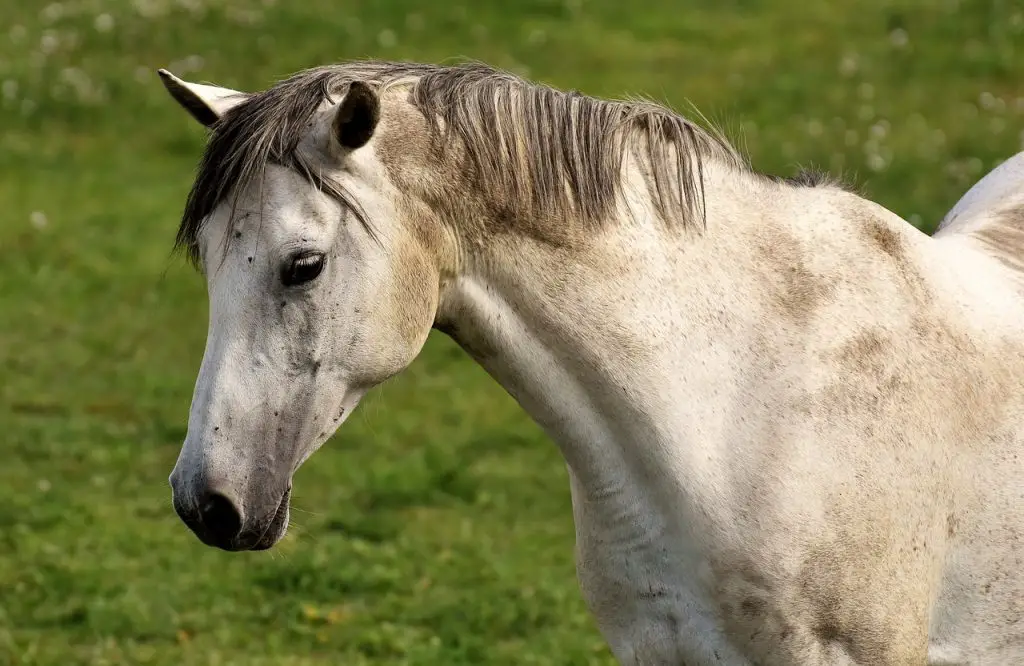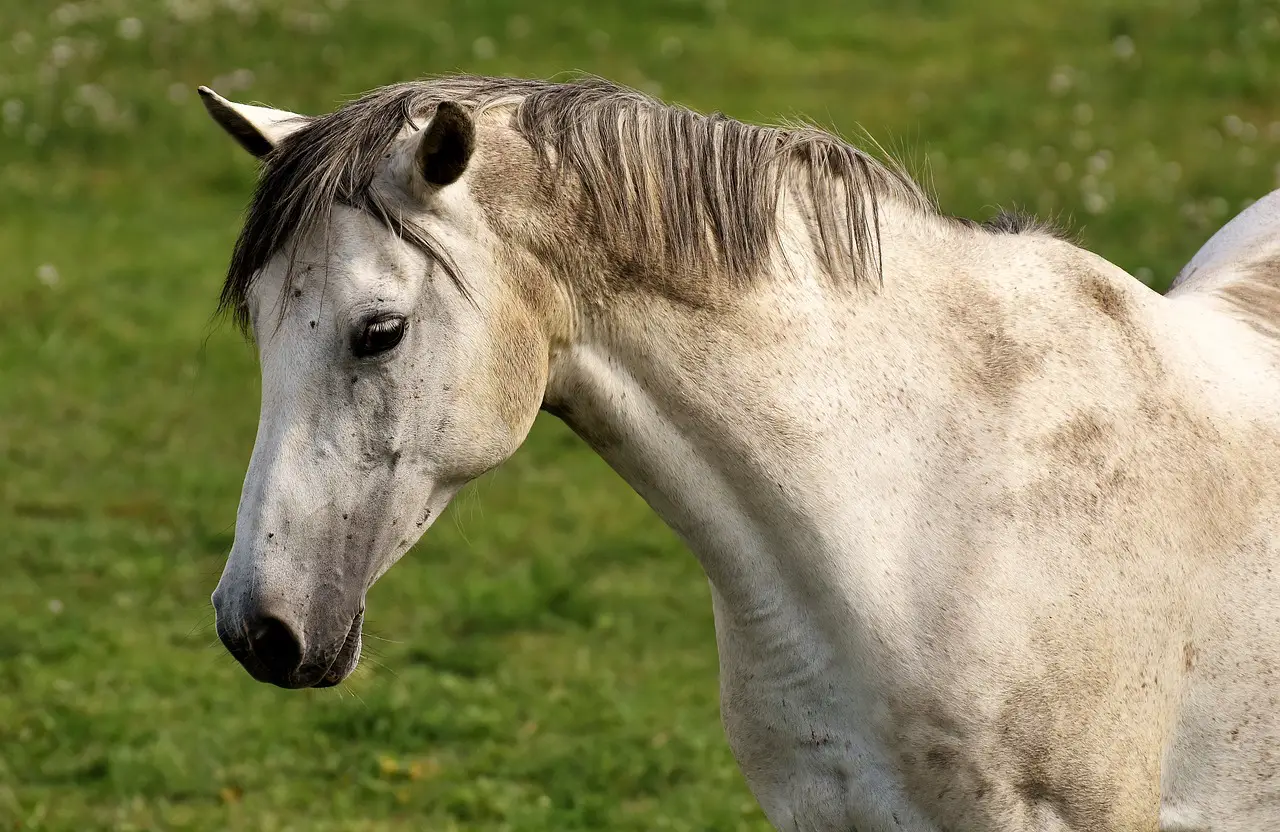Last Updated on March 26, 2022 by Allison Price
A horse may become severely malnourished or disabled due to several factors. Although age and concomitant diseases can play a part, owner ignorance and economic hardship are the main reasons horses become severely malnourished. Due to the recent global recession and the almost simultaneous closing of US equine slaughter plants, the problem of the neglected horse is worsening. These plants were responsible for processing approximately 68,000 horses annually prior to their closure in 2007. Approximately 100,000 horses per year in the US are categorized as “unwanted,” and a relatively small amount of these horses make it into a rescue or sanctuary where they can be rehabilitated and rehomed (For more information on the Unwanted Horse and how you can help, please visit the Unwanted Horse Coalition . These horses can be considered to be in poor health and even emaciated.
Assessment of the Horse
A veterinarian must assess the horse’s overall health before you can begin to help it. A weight and body condition score will be taken at this time. Scores of 4 to 6 are considered ideal, and scores below 3.5 are considered thin or emaciated. Horses with poor or emaciated bodies will have prominent backbone, hip, and rib bones. Their heads may appear to bedisproportionately large for their body. Their appearance may be depressed, with dull eyes and a depressed attitude. They might also have lethargy, lack of interaction with other horses, and a lackluster hairstyle.
To determine if the weight loss is due to medical reasons, a physical exam will be done. A horse may have difficulty chewing and processing food due to poor dental health. Horses can have difficulty getting to their food, or maintaining a high enough number of horses in order to receive enough nutrition. Starvation can also be caused by other conditions, such as PPID, high parasite loads, and problems with other systems. You can address any medical issues during the refeeding process if they are discovered.
The Progression of Starvation
Fats and carbs are the fuel for normal horses. Horses who eat a regular diet replenish these fats and carbohydrates. These fats and carbohydrates are lost when the body doesn’t replenish them properly. The horse’s body will start to use protein as an energy source if the starvation process continues unabated. A starving body can’t choose which protein stores to use for energy so it will use the skeletal muscles as well as vital organs such the heart and gastrointestinal tract. The prognosis for survival of a horse that has lost more than half its body weight is poor.
Refeeding Syndrome
Although it is natural to feed the starving horse a lot of food, it is better to be slow and steady when feeding them. Too much food, too quickly, can cause a horse to become irritable and even die. Concentrated calories can cause “Refeeding Syndrome”, which is a spike in insulin. Insulin spikes move carbohydrates into cells for future use. However, it also causes magnesium calcium potassium and phosphorus to move into cells. Insufficient levels of these electrolytes can lead to kidney failure, respiratory failure and cardiac collapse.

Hypokalemia (low potassium) can cause muscle weakness, neurologic dysfunction and poor heart muscle function. It can also lead to seizures, coma, hypokalemia, hypokalemia, and other conditions such as seizures. Hypomagnesemia (low magnesium levels in the blood) may cause horses to become anxious, irritable or aggressive. Hypophosphatemia (low blood phosphorus) can cause hemolytic anemia, which damages red blood cells. Hypocalcemia (low blood calcium) can cause ataxia, seizures, hyperexcitability and high heart rate. It also causes muscle fasiculations and ileus (lack in movement of the intestines).
Study on Refeeding Diets
To find the best diet to refeed malnourished horses, experiments have been done. Due to the differences in nutrient content, three different feed types were tested at UC Davis. Alfalfa Hay, which is high protein and low in carbohydrate, starch; Oathay, which has high fiber and low protein; and a commercially-available complete feed, which consisted of molasses and fat. This feed was high carbohydrate and starch. These three diets were given over a 10-day rehabilitation period to 22 starved horses. The feeds were identical in calories, so horses that were fed oathay had the most feed while horses who were fed the complete diet received the least.
Insulin was released by horses that were fed high levels of carbohydrate. This caused carbohydrates and other electrolytes to be drawn into the cells as previously mentioned. Due to insulin spikes and subsequent depletion, the body’s ability to absorb electrolytes was depleted within three to seven days. Oat hay diets were very heavy and caused diarrhea in many horses. Oat hay also had low levels of many nutrients, such as magnesium and phosphorous. This made it unsuitable for rehabilitation. Due to its high levels of protein, magnesium, and phosphorus, the alfalfa-hay diet achieved the best results. The effects of insulin release on Alfalfa were also minimal because it is low in carbohydrates.
Another study by UC Davis compared straight Alfalfa hay with alfalfa hay or corn oil to increase the energy density. Both diets were again fed at the same calorie intake. The corn oil did not have any adverse effects in this study but it did decrease the total nutrient content for phosphorus and magnesium. This resulted in a decrease in blood phosphorus over the 10-day period. This was not good for rehabilitation. Straight alfalfa was again shown to be the best feed to provide the required nutrients in the right amounts to the malnourished horses.
UC Davis Refeeding Program Courtesy Dr. Carolyn Stull
*A hayscale is required to implement a program of refeeding.
Days 1 through 3: Feed one-half a pound of high quality leafy alfalfa each four hours (total 6 lb in six feedings). A veterinarian should evaluate your horse’s health.
Day 4-10: Increase the alfalfa intake slowly and reduce the amount of food. By Day 6, you will be consuming just 4 lb of hay per 8 hours (totaling 13 lb in 3 meals).
From 10 to several months old: Give your horse as much alfalfa food as he will eat, and reduce the daily feeding to once a day. Access to a salt block is essential. You should not give grain or any other supplemental material to horses until they are well on their recovery. Early feeding can cause complications and even death.
**Provide constant, clean water.
***Horse recovery is greatly aided by deworming and dental care
UC Davis’s research has found that the best approach for initial refeeding consists of frequent, small amounts of high-quality alfalfa. High quality alfalfa is very leafy, with fine stems, no dust or mold, and has a crude protein content of 16 to more than 20%. For horses with dental issues that do not allow it to eat hay, soaked alfalfa cubes or pellets can be substituted. The amount should be slowly increased at each meal, while the number of feedings should be decreased gradually over a 10 day period. After this, the horse can be fed as much as they will eat. After about two weeks, the horse should show increased energy levels. While some weight can will occur after a month, three to five months or more may be needed to completely rehabilitate a malnourished horse to a normal body weight. Caretakers are urged to continue to seek veterinary advice and nutritional consultation during the process, and to be patient and move slowly, as feeding too aggressively too early will worsen the horse’s prognosis for recovery. Grain supplementation can be implemented very slowly and gradually after a few months of the alfalfa diet – refer to your veterinarian for more specific instructions based on the individual horse’s progress.
Poor prognosis and other components of rehabilitation
Remember that horses are not always in their favor when they have to deal with starvation. A staggering 20% of horses who are severely malnourished will die, even if they receive proper refeeding. Rehabilitating a starved horse is expensive. This includes shelter, food, medication and anti-parasitics. Rehabilitating a neglected horse is a rewarding endeavor if you are successful. To fully rehabilitate a neglected horse, it takes more than water and food. To keep your horse moving normally, you must take care of his hooves. The horse should have its hooves trimmed as soon as possible. Proper nutrition and grooming will help the horse grow a healthy, normal hair coat. Do not force your horse to exercise until their body condition score is below 3.5. Light lunging can be done for five to ten minutes or hand-walking them up to three times per week. As they increase their nutrient intake, this will allow horses to gain muscle. These horses can benefit from proper nutrition and TLC.


